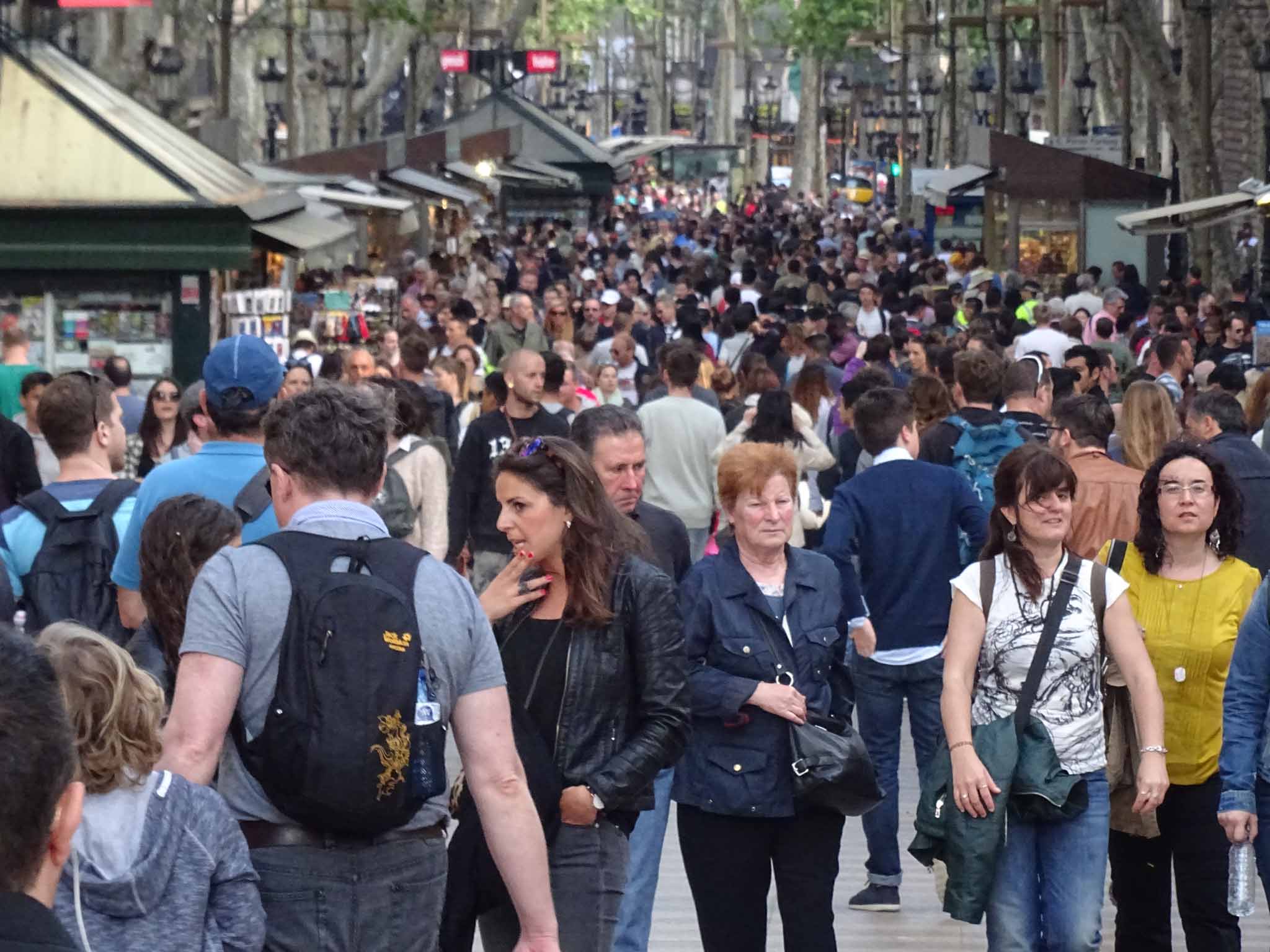Some getting around Barcelona basics to get you started on a holiday to remember
When to go
Barcelona is a brilliant year-round destination. Weather-wise you’re looking at average highs in the summer months of 26-29°C (79-84°F) with overnight lows of 18-21°C (64-70°F). In wintertime expect highs of 14°C (57°F) and lows of 5-6°C (41-43°F).

The best time to visit Barcelona is now! But I’d recommend avoiding the summer months if possible. Not so much because of the weather, but because of the crowds. Winters are mild with frequent sunny skies. Winter is a viable option, but be aware that some restaurants close over the Christmas period.
The ideal times (to my mind) are spring and autumn, with pleasant temperatures and fewer crowds to deal with.
Arrival
Chances are you’re coming in through Barcelona’s El Prat Airport.
Far and away the most straightforward way to town for fresh arrivals is by taxi. There are taxi stands outside both terminals, and queues tend to be short. You should get to any hotel in the metro area in around 30 mins. Expect a fare of €30-40. We have yet to experience a dishonest Barcelona taxi driver. We have yet to find one genuinely fluent in English either, but have always managed to find our destination.
Barcelona’s notorious pickpockets are going to find tourists encumbered with all their possessions easy targets. For this reason alone we can’t recommend the taxi service highly enough. Get yourself safely to your hotel first, and then venture forth.
If not…
The Aerobús service connects T1 and T2 to Plaça Catalunya in the centre of town for €5.90. From there you can cab or train to your hotel.
The Barcelona Metro also serves the airport. There is a service on L9 Sud from Aeropuerto to Barcelona Sants and Passeig de Gracia. This service runs every 30 minutes between 6:00 and 23:00.
You may also arrive by train, most commonly at Barcelona Sants (Sants Estació). Here you can connect with the Metro to get you anywhere in town with ease. There is also a busy taxi stand outside.
Estació de França is another point of arrival, though much less busy than Sants. There is no connection to the Metro at Estació de França , but L4 Barceloneta is a five-minute walk.
Getting Around Barcelona
Barcelona may welcome as many as 12 million tourists a year, but the permanent population is only 1.6 million, so it is actually a fairly compact town. Most tourist attractions are in the old town or near the waterfront. This makes it a city that is ideal for walking.
The plus side is that if you explore the charming Ciutat Vella – old town – on foot, you’ll make unique discoveries. You wouldn’t find them otherwise. The downside is that sometimes the area feels crowded with tourists. This is especially true on Las Ramblas and the nearby Barri Gòtic. It can get busy.

Barcelona’s Metro (excellent interactive map here) is a surprisingly extensive underground rail system. It is easily the best solution to get around Barcelona when your feet have had enough.
There are touchscreen ticket vending machines at all stations. If you’re planning to use the Metro lash out on a T10 ticket. It gives you 10 rides anywhere on the system in a 30 day period for €12.15. Or if you’re planning to squeeze a lot in, there’s a €17.50 unlimited trip (in Zone 1) 2-day ticket.
Single trip tickets cost €2.55.
There are plans to introduce a ‘touchless’ system and to phase-out magnetic-strip tickets. For the moment there seems to be both in operation, which can be somewhat confusing. The new T10 tickets are tap-and-go types.
There are taxi stands in busy areas, and you can usually hail one on the street with ease.
Safety
Unfortunately Barcelona has a well-earned reputation for petty thievery – particularly pickpockets. Never carry a wallet in a back pocket. It may be helpful to distribute cash in different pockets. And keep handbags close at all times – never on the back of a chair.
Be aware that Barcelona’s notorious pickpockets target visitors, and public transport is a happy hunting ground for thieves. Likewise be wary at busy tourist attractions (though you’re unlikely to be bothered inside attractions that charge fees).
Also be aware that these guys are professionals, it is all-too-easy to be scammed in one way or another.
Even some locals have had enough, and have organized citizen patrols on the Metro.
If you do fall victim, you may need to make a police report. You can file a report online here, or in person at police stations. The main one is at Carrer Nou de la Rambla, 76-78. Be prepared to wait; they have a lot of people to deal with. There is more info here for dealing with lost documentation.
Save yourself some hassle and document your credit card numbers, passport info, and phone IMEI number. And kept it safe elsewhere.
The emergency number is 112 to report robberies, accidents, assaults, fires, or medical emergencies.
Turisme de Barcelona offers a tourist information service at (+34) 932 853 834 daily from 8am until midnight. They will answer any questions or help deal with incidents.
